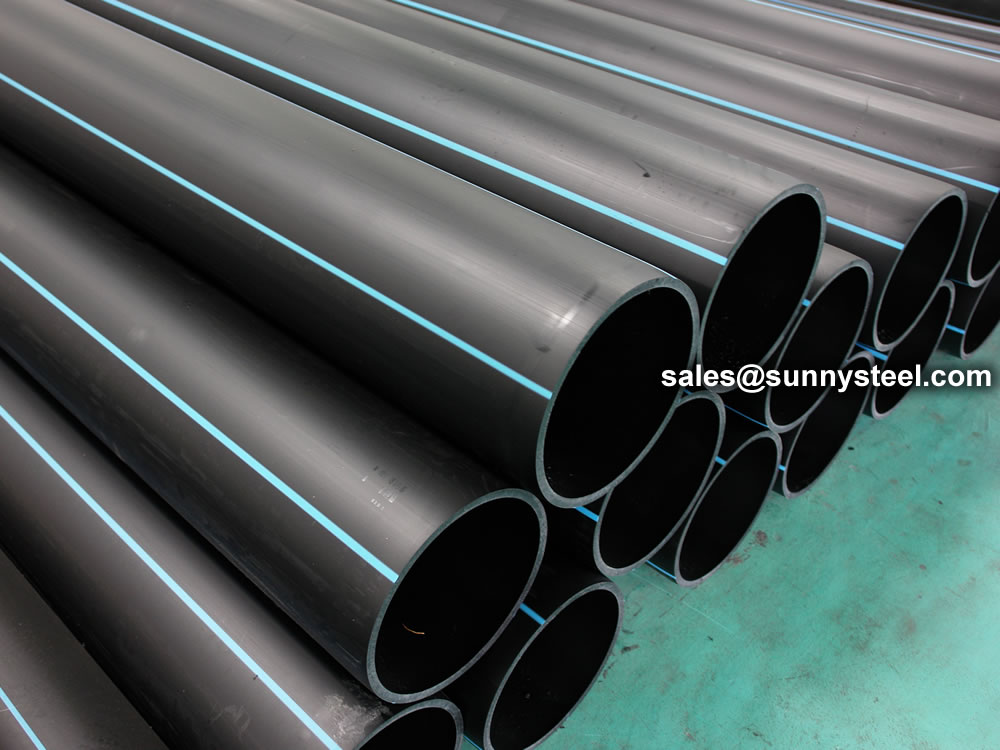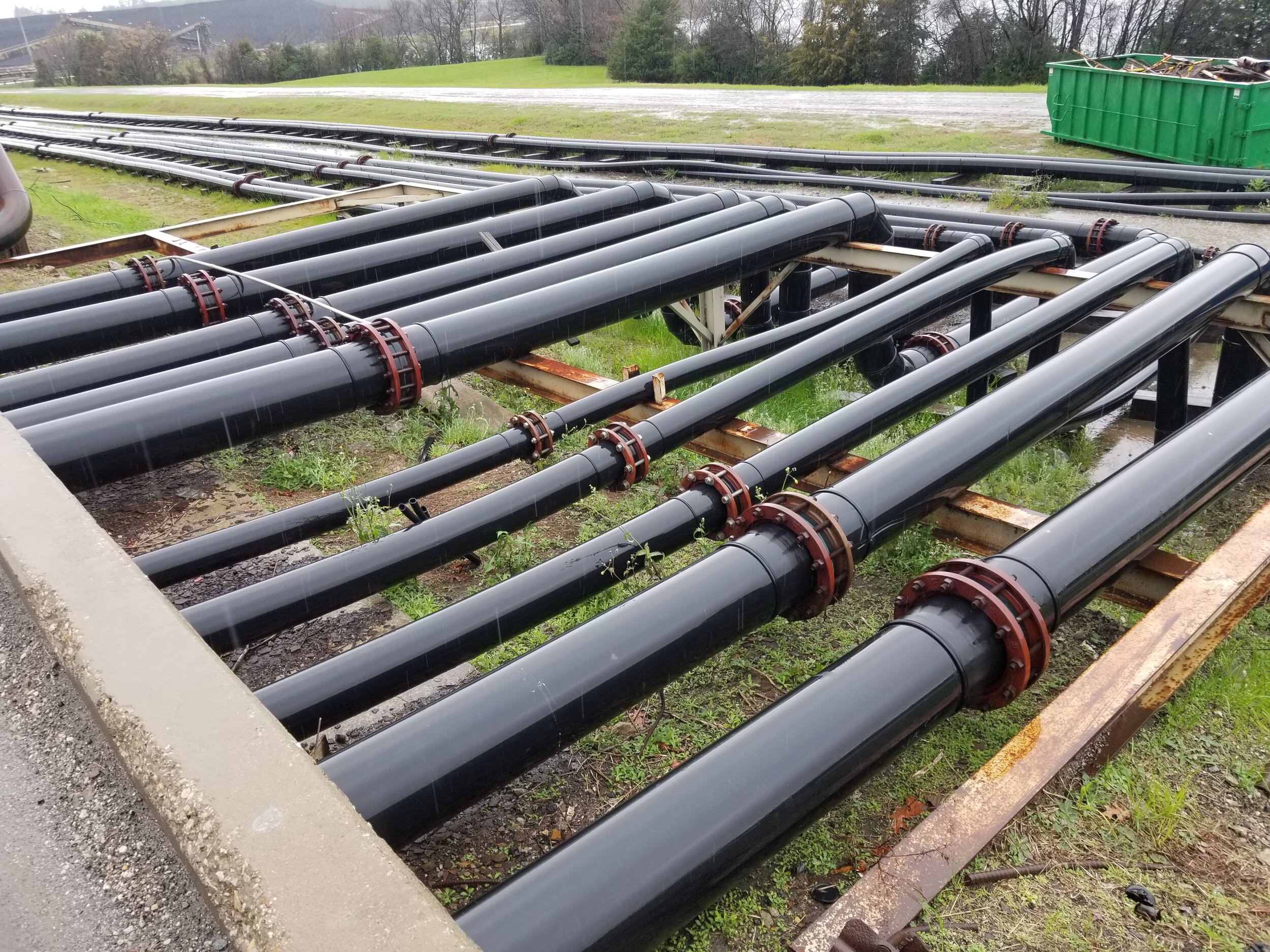How Midland TX HDPE Pipe Fittings in Stock Support Local Projects
Check Out the Manufacturing Process Behind High-Quality HDPE Pipe and Its Applications
The manufacturing procedure of high-grade HDPE pipes is detailed and systematic. It begins with the option of resources that improve efficiency. Following this, ethylene undergoes polymerization to create resin, which is then shaped via extrusion. Quality assurance is paramount, making sure that the final product satisfies rigid standards. The journey of HDPE pipes does not end with production. Their applications across numerous industries disclose a broader significance worth analyzing.
Understanding HDPE: Characteristics and Advantages

High-density polyethylene (HDPE) is a functional polycarbonate understood for its toughness and resistance to numerous environmental elements. This material shows outstanding tensile strength, making it ideal for demanding applications. Its low-density framework adds to a light-weight product, assisting in convenience of dealing with and installation. HDPE also showcases amazing resistance to chemicals, which decreases degradation when exposed to extreme compounds.
The product's low dampness absorption even more enhances its long life, making it optimal for use in pipes and tank. In addition, HDPE is immune to ultraviolet (UV) radiation, making sure that products maintain their integrity even when subjected to sunshine. In addition, its flexibility enables the production of detailed shapes without compromising toughness. The green nature of HDPE, commonly stemmed from recycled products, includes to its charm, advertising lasting techniques in manufacturing. On the whole, these properties and advantages make HDPE a preferred option for various industrial and consumer applications.
Basic Material Choice for HDPE Manufacturing
The choice of resources for HDPE production is necessary to verify the end product satisfies the preferred specifications and quality standards. High-density polyethylene (HDPE) is mostly produced from polymerized ethylene, stemmed from fossil gas such as natural gas or unrefined oil. The top quality of these feedstocks substantially affects the mechanical and thermal properties of the last HDPE.
Ingredients additionally play a considerable duty in enhancing HDPE's performance, including anti-oxidants, UV stabilizers, and colorants, which enhance resilience and resistance to environmental factors. The option procedure must consider not just the chemical composition of the raw products but likewise their handling attributes to assure efficient manufacturing.
The sourcing of raw materials should focus on sustainability and conformity with environmental laws, as responsible methods are essential in today's market. Inevitably, mindful raw product selection lays the structure for generating premium HDPE pipelines ideal for varied applications.
The Extrusion Refine: Shaping HDPE Pipe
The extrusion process plays an essential function in forming HDPE pipelines, starting with careful product prep work strategies that ensure excellent circulation and consistency. Similarly essential is the layout of the die, which straight influences the last dimensions and surface top quality of the pipeline. With each other, these aspects add considerably to the performance and quality of HDPE pipe production.
Product Preparation Strategies
Effective production of HDPE pipelines begins with thorough product preparation strategies, specifically the extrusion process. Throughout this phase, high-density polyethylene resin is very first dried out to remove wetness, guaranteeing optimal flow characteristics. The resin is then fed into the extruder, where it goes through heating and melting, transforming right into a thick state. This home heating procedure is thoroughly managed to keep the material's stability and performance. The liquified HDPE is compelled via a die, shaping it into a continual pipe kind. Correct temperature management during extrusion is essential, as it straight affects the product's properties and the end product quality. When formed, the HDPE pipeline is cooled and reduced to specified sizes, all set for subsequent handling and applications.
Die Layout Value
Accuracy in die style plays an important role in the extrusion process of HDPE pipes. The die acts as the last shaping device, straight affecting the pipeline's dimensions, wall density, and surface coating. A properly designed die assurances uniform product flow, reducing problems such as abnormalities and weak areas. The geometry of the die must be optimized to accommodate the certain residential or commercial properties of HDPE, including its viscosity and thermal actions throughout extrusion. Additionally, the cooling price of the product as it passes through the die can markedly influence the pipeline's structural integrity. Spending in sophisticated die innovation is important for manufacturers intending to create high-grade HDPE pipes that fulfill sector criteria and customer assumptions.
Top Quality Control Measures in HDPE Manufacturing
Although various aspects affect the quality of HDPE pipeline production, reliable quality assurance procedures are vital to guarantee consistency and integrity in the end product. Key quality control methods include rigorous material inspection, confirming that the raw polyethylene meets established standards for pureness and density. During the extrusion procedure, specifications such as temperature level, pressure, and cooling time are carefully kept track of to keep dimensional accuracy and structural integrity
Additionally, post-production screening is crucial; manufacturers usually perform hydrostatic tests to evaluate the pipeline's strength and resistance to stress. Visual inspections for surface issues additionally boost high quality assurance. Qualification from appropriate criteria organizations, like ASTM or ISO, offers an additional layer of trustworthiness. By implementing these thorough quality control actions, manufacturers can lessen flaws, boost efficiency, and guarantee that the HDPE pipelines meet the certain needs of numerous applications, eventually bring about customer satisfaction and trust in the product.
Applications of HDPE Pipe Across Industries
HDPE pipelines are utilized across numerous fields because of their longevity and flexibility. In water circulation systems, they ensure effective delivery, while in wastewater monitoring, they supply trustworthy options for waste transport. In addition, agricultural irrigation networks benefit from HDPE's resistance to rust and versatility, making it an ideal option for modern-day farming practices.

Water Circulation Equipments
A substantial variety of industries count on high-density polyethylene (HDPE) pipelines for efficient water distribution systems. Understood for their longevity and resistance to corrosion, HDPE pipelines are widely made use of in local water networks, agricultural irrigation, and commercial applications. Their light-weight nature promotes easy handling and installation, lowering labor expenses and time. In addition, HDPE pipelines can fit various stress degrees, making them ideal for both low and high-pressure systems. hdpe pipe suppliers Midland TX. The versatility of the product permits smooth assimilation into existing infrastructure, decreasing the requirement for considerable excavation. Additionally, HDPE's resistance to chemical seeping guarantees that the water supplied continues to be safe and clean, making it a perfect selection for preserving the quality of safe and clean water throughout numerous markets
Wastewater Management Solutions
Reliable water circulation systems additionally lead the way for ingenious wastewater monitoring services, where high-density polyethylene (HDPE) pipelines play a significant duty. Popular for their longevity and resistance to rust, HDPE pipelines are perfect for transferring wastewater in various setups. Their versatility enables simple installment in complex environments, decreasing the requirement for comprehensive excavation. Furthermore, HDPE's smooth interior surface area minimizes friction, improving circulation prices and performance. These pipelines are also resistant to chemical leaching, guaranteeing that impurities do not endanger the surrounding setting. Industries, municipalities, and treatment centers significantly depend on HDPE pipes for their dependability and durability, making them a recommended selection for modern wastewater monitoring systems. This versatility underscores the important value of HDPE pipelines across various applications.
Agricultural Watering Networks
Agricultural irrigation networks profit substantially from making use of high-density polyethylene (HDPE) pipelines, which provide effective and reputable water distribution to crops. HDPE pipelines are light-weight, making them simple to deliver and mount, while their versatility enables different arrangements in varied surfaces. These pipelines show excellent resistance to corrosion, chemicals, and UV radiation, guaranteeing sturdiness in severe agricultural atmospheres. Additionally, their smooth interior surface lessens rubbing loss, enhancing water circulation and lowering energy prices related to pumping. The longevity of HDPE pipes, often going beyond half a century, contributes to reduce upkeep and replacement expenses. As a result, farmers increasingly rely on HDPE pipes to boost irrigation effectiveness and advertise lasting agricultural practices, eventually resulting in enhanced crop yields and source conservation.
Future Patterns in HDPE Pipeline Technology
As the demand for lasting and effective facilities grows, improvements in HDPE pipeline innovation are poised to change numerous sectors. Emerging fads consist of the combination of wise modern technologies, such as sensing units and IoT capacities, which assist in real-time surveillance of pipeline problems, decreasing maintenance prices and avoiding leaks. Additionally, the advancement of innovative production strategies, such as 3D printing, is enabling the production of complex, tailored pipe designs Pipe Supplier American Plastics Midland that satisfy specific project demands.
The focus on recycling and circular economic situation practices is driving the development of HDPE pipelines made from recycled materials, boosting sustainability. Boosted jointing techniques, such as electro-fusion and mechanical installations, are also improving installation effectiveness and dependability. The expanding focus on environmental laws is pressing manufacturers to adopt greener production procedures, guaranteeing that HDPE pipes not just meet sector criteria but likewise cultivate a more lasting future for framework advancement.
Frequently Asked Questions
How Does HDPE Compare to Various Other Plastic Products?
HDPE outshines several various other plastic products regarding resilience, chemical resistance, and flexibility. Its reduced thickness and high tensile stamina make it excellent for different applications, typically surpassing options in both efficiency and longevity.
What Are the Ecological Influences of HDPE Production?
The ecological effects of HDPE manufacturing include greenhouse gas discharges, energy usage, and possible contamination from making processes. Furthermore, inappropriate disposal can result in soil and water contamination, increasing problems concerning lasting eco-friendly impacts.
Can HDPE Water Lines Be Reused?
Yes, HDPE pipelines can be recycled. Many centers approve made use of HDPE for processing, transforming it into brand-new products. This recycling contributes to sustainability initiatives, lowering plastic waste while preserving resources and power in the production cycle.
What Is the Life-span of HDPE Piping?

Exactly How Do Temperature Level Variants Influence HDPE Pipe Performance?
Temperature level variants considerably affect HDPE pipe performance, impacting flexibility and toughness. Heats can result in softening, while reduced temperatures might trigger brittleness, inevitably affecting the pipe's longevity and suitability for different applications in diverse settings.